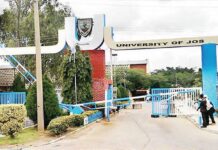Faculty attraction is crucial in enhancing the quality of teaching, fostering expertise and knowledge, promoting research and innovation, and providing positive role models for students in Indian higher education. In short, for improving the quality of education as outlined in Sustainable Development Goal 4.
Philip Altbach’s recent article, “Realism about Indian higher education”, in International Higher Education emphasises the significance of attracting and retaining qualified faculty for improving Indian higher education. But what are the challenges associated with faculty attraction? Based on data analysis and stakeholder conversations, we can see that there are several.
Faculty shortages
The first is the difficulty in attracting highly qualified faculty and providing them with favourable working conditions. Many universities struggle due to a lack of basic infrastructure and amenities. Consequently, there is a widespread faculty shortage across different types of institutions.
Assistant professor positions have vacancy rates of 15% to 35%, associate professor vacancies range from 40% to 60%, and full professor vacancies range from 25% to 55%. Deemed universities have the lowest vacancy rates, while state and central universities face the highest rates.
According to an article by Altbach in University World News, “India’s higher education is opening up. But is it ready?”, around 33% of academic positions in central universities were vacant last year, with the situation being worse in state institutions. Additionally, efforts to increase the proportion of faculty with doctorates are hindered by the fact that many academics do not hold a terminal degree.
The second challenge is the high unemployment rate among doctoral graduates. Insufficient quality assurance in doctoral programmes, low research volume and a shortage of qualified teachers plague even the top universities in India – a situation that exacerbates, rather than mitigates, the large number of faculty vacancies described above.
Indian scholars, ranging from Manoj Kumar to Younis Ahmad Sheikh, also stress the importance of recruiting and attracting qualified faculty. Faculty shortages result from the lack of attracting factors for qualified candidates in Indian institutions, faculty migration to overseas institutions and faculty members leaving academia for non-academic fields within the country.
To address the scarcity of qualified academic faculty, the University Grants Commission (UGC) recently approved draft guidelines for engaging ‘professors of practice’ in universities and colleges.
These guidelines allow the appointment of distinguished experts who have made significant contributions in their fields. This move by the UGC reflects the overall faculty shortage and the pressing need to attract faculty.
What can be done to improve recruitment?
Considering the broader perspective, the study “Attracting and retaining faculty in technical educational institutions” by Manoj Kumar outlines key factors for effective faculty attraction in Indian technical institutions, which can be applied to Indian higher education as a whole.
These factors include implementing a rigorous recruitment and selection process, organising familiarisation visits to institutions, offering attractive compensation packages and ensuring equity in compensation.
Faculty attraction poses significant challenges in Indian higher education. Addressing these challenges requires addressing infrastructure deficiencies, improving quality assurance in doctoral programmes and providing competitive compensation packages. Through effective strategies and policies, India can enhance faculty attraction and thereby improve the quality of higher education in the country.
Site visits have revealed a notable influx of faculty applications at renowned universities, indicating success in their recruitment policies. These institutions have employed varied approaches to ensure a complete faculty roster each semester. Offering innovative compensation packages and providing research grants contribute to attracting high-calibre faculty and improving overall education quality.
However, implementing these strategies simultaneously with the current high faculty-to-student ratio poses difficulties. Nevertheless, prioritising reputation, proactive measures and research-focused faculty recruitment can elevate Indian higher education’s quality, fostering excellence, innovation and academic progress.
The inequality challenge
At the same time, given the academic excellence initiatives, the Institutes of Eminence in particular, many institutions are likely to find it challenging to match the salary levels offered by the most renowned institutions. So, India’s higher education sector is facing inequality in the quality of education.
To deal with the issues of educational inequality and ensure quality education irrespective of academic institutions, policy stakeholders that we met (leaders of public and private universities, officers of the UGC and representatives of the Ministry of Education) emphasise that efforts to bridge this gap and provide appealing compensation are essential.
In addition to regular salaries, however, institutions can allocate dedicated research funding to cover research project expenses, conference participation and academic collaborations.
Certain Indian academic institutions offer housing or housing allowances to faculty members, easing the financial burden of housing expenses, especially in metropolitan areas.
Some also provide comprehensive health insurance packages for faculty and their families, often negotiated as group plans to make them more affordable.
Implementing attractive retirement and pension plans, with contributions from both the institution and faculty members, ensures financial security in academics’ post-service years.
The demographic challenge
The current situation in India regarding population dynamics and university enrolment reveals intriguing trends.
In 2020 the population aged 18-23 reached approximately 152 million, a 12 million increase compared to 2010. College and university enrolment also witnessed a significant rise, with a total of 41 million enrolled students in 2020, up from 29 million in 2010. This enrolment aligns with the gross enrolment ratio (GER) of 27% and corresponds to National Education Policy (NEP) estimates.
However, India is projected to experience demographic changes in the coming years. The 18-23 age group is expected to decline after 2030 due to a slowing birth rate. While India’s overall population is projected to grow, it is estimated that the proportion of individuals aged 18-23 will decrease by around 12%. This shift poses challenges as India will have a relatively older population in 2050 compared to 2010.
Nevertheless, despite the projected decline in the 18-23 age group, college and university enrolment is expected to continue growing. Higher education institutions are capturing a larger ‘market share’ of the diminishing pool of 18-23-year-olds. The NEP’s goal of achieving a GER of 50% drives this expansion, aiming to provide higher education access to an increasing number of young individuals.
However, this surge in enrolment presents challenges in terms of faculty capacity for the reasons outlined above.
If the enrolment rate increases and the teacher-student ratio remains the same, the problems will be exacerbated. However, if the enrolment rate increases and India can change its teacher-student ratio significantly, that would mitigate some of the current struggles with both the number of faculty required and would mean that it could focus on improving the quality of education offered in line with the NEP aims.
If the quality of faculty improves, they may be able to teach a larger number of students.
Planning for faculty increases
Given all of this, planning for such a significant increase is a challenge for policymakers. Balancing the need for increased faculty to improve quality is crucial.
By adapting policies and strategies, India can sustain the growth of higher education in the country. It provides an opportunity to transition towards a faculty composition comprising more permanent positions, fostering excellence in education.
In conclusion, India’s population dynamics and university enrolment trends pose challenges and opportunities for higher education.
While the number of young people in India is expected to decline, higher education enrolment is projected to continue growing. Meeting the demand for faculty members while ensuring educational quality requires careful planning. By leveraging these trends effectively, India can transform its higher education system into a beacon of excellence that caters to the evolving needs of its society.
University World News














